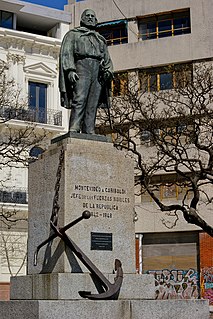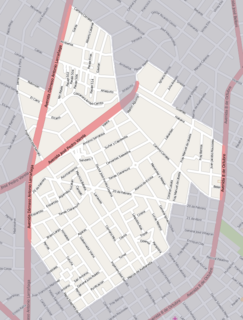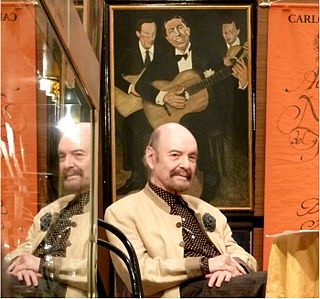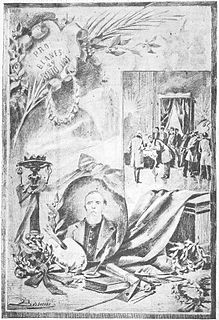
Arrhenatherum, commonly called oatgrass or button-grass, is a genus of Eurasian and North African plants in the grass family.

Delmira Agustini was an Uruguayan poet of the early 20th century.

The 1980 World Champions' Gold Cup, also known as Mundialito, was a friendly international football tournament organized by the Uruguayan Football Association and supported by FIFA –although not officially recognized– in commemoration of the 50th anniversary of the first FIFA World Cup, which had been celebrated in 1930 at the same venue. It was held at the Centenario Stadium in Montevideo, Uruguay, from 30 December 1980 to 10 January 1981.

Buceo is a barrio in Montevideo, Uruguay.

Italian Uruguayans are Uruguayan-born citizens who are fully or partially of Italian descent or Italian-born people in Uruguay. It is estimated that more than one third of Uruguayans are of Italian descent.

The Diocese of Canelones is a Latin Church ecclesiastical territory or diocese of the Catholic church in Uruguay. The diocese was erected in 1961, and is a suffragan diocese in the ecclesiastical province of the metropolitan Archdiocese of Montevideo. Its episcopal see is the Cathedral of Canelones.
Oplismenopsis is a genus of South American plants in the grass family. The only known species is Oplismenopsis najada, native to southern Brazil, Uruguay, and northeastern Argentina.
Rhynchoryza is a genus of plants in the grass family. The only known species is Rhynchoryza subulata, native to Brazil, Argentina, Paraguay and Uruguay.

Villa Española is a barrio of Montevideo.

Giant is a 2009 comedy film, written and directed by Adrían Biniez, an Argentinian film director living in Uruguay.

Mariano Arana is an Uruguayan architect and politician, former Minister of Housing, Spatial Planning and Environment of Uruguay and former mayor of Montevideo.

Edificio Lapido is a building on the 18 de Julio Avenue in Centro, Montevideo, Uruguay.

Horacio Ferrer was a Uruguayan-Argentine poet, broadcaster, reciter and tango lyricist. He is particularly well known for having composed the lyrics for tangos by Astor Piazzolla, such as Balada para un loco and Chiquilín de Bachín.

The Villa Belgiojoso Bonaparte, also known as Villa Reale and formerly called Villa Comunale, is a palace in Milan, in Lombardy in northern Italy. It was built between 1790 and 1796 as the residence of Count Ludovico Barbiano di Belgiojoso. The villa is in Neoclassical style, and was designed by Leopoldo Pollack. The main entrance is on via Palestro, facing the Giardini Pubblici of Porta Venezia, the eastern gate of the city.

Blanca Renée Arrillaga Oronoz de Maffei was a Uruguayan chemist, botanist, professor and agrostologist. Originally from the Uruguayan Department of Artigas, she began her studies there then moved to Montevideo where she earned a degree in Pharmaceutical Chemistry from the Faculty of Chemistry at the University of the Republic (Uruguay). Her most important publications include 'Nuevas especies y notas taxonómicas en Uruguay y Paraguay' (1968) in collaboration; Plantas Medicinales (1969) and Gramíneas Uruguayas (1970) with B. Rosengurtt and P. Izaguirre de Artucio.

Leopoldo Bersani was an Italian painter and sculptor who moved to Uruguay as a young adult.
The 1947 Copa Aldao was the final match to decide the winner of the Copa Aldao, the 17th. edition of the international competition organised by the Argentine and Uruguayan Associations together. The final was contested by Uruguayan club Nacional and Argentine side River Plate.













